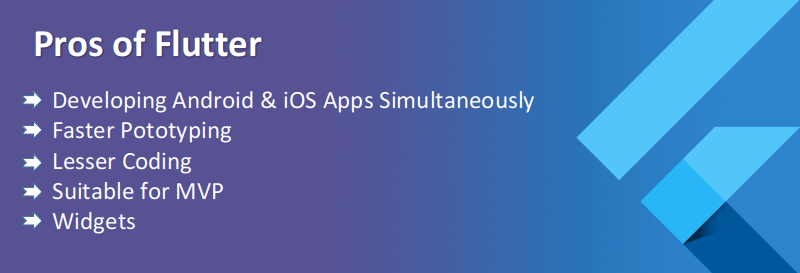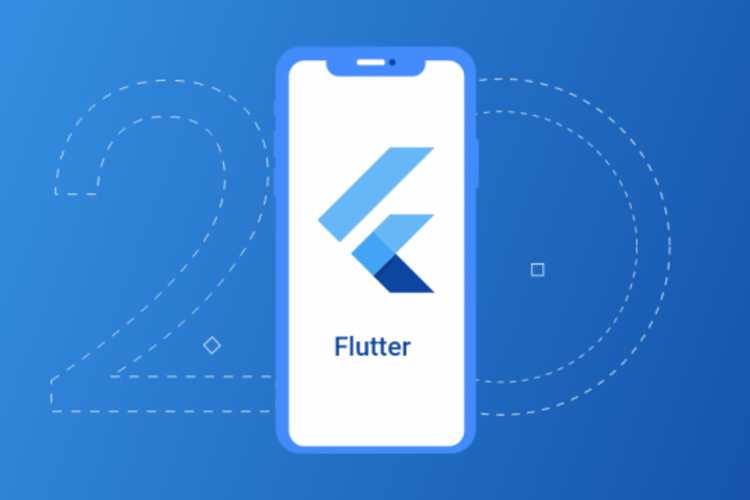What Makes Flutter Set A New Development Trend in 2025?
- Mobile
- January 2, 2024
These days, mobile app technology is the biggest revolution. In this competitive era, many business applications fail awfully. Several reasons are there behind a mobile app’s failure: uncertain testing, the inadequacy of client-oriented features, originality factor, development technology, etc.
A good mobile app can make your business successful and to reach that height, you should build a mobile app enriched with client-oriented features and able to engage all users remarkably.
The selection of the right technology is important for successful mobile app development. This blog discusses one such great mobile app technology – Google’s Flutter.
Released in 2017, Flutter is still a newcomer in the cross-platform app development industry. Nevertheless, due to its robust features and exclusive benefits, it has become succeeded in the mobile app development world.
Being pondered the most rapidly developing mobile app building tools these days, Flutter is ideal for MVP (Minimum Viable Product). To authenticate your business idea, you must follow MVP, the quickest approach.
Let’s discuss what flutter is and why it is considered the development trend of 2025!
What is Flutter?
Google offers Flutter, an open-source platform to use one codebase for developing native iOS and Android apps. Instead of being a module, it’s a complete Software Development Kit (SDK) that incorporates all you require for mobile app development across platforms. It incorporates command-line tools, engine rendering, APIs for testing and integration, and readymade widgets.

Basically, Flutter follows a reactive development architecture, where the UI contents are adjusted automatically when the variables are modified.
React Native adopted this concept, but it needs a JavaScript bridge for controlling OEM widgets. This can lead to performance issues, which Flutter reduces by erasing this bridge fully and combining it with the app.
This is an object-oriented language that can be utilized for compiling into native code with no requirement of extra bridges. This helps accelerate an app’s start-up time to a great extent.
Top Features of Flutter
After discussing what Flutter is, you might be eager to know its features. Here are a few exciting features of Flutter:
- Flutter features a hot reload, a strong tool that helps you get numerous widgets and enables you to function in a dynamic interface.
- It allows developers to build applications for the main platforms like iOS and Android, using just one codebase.
- It features a command named Flutter Doctor that enables you to address bugs fast so the developers can troubleshoot them ASAP.
- Its framework is highly flexible as it provides a widgets’ library for app builders to use.
- It has the RAM code that makes it perfect for tech firms and start-ups.
- It has a great GPU rendering UI that is highly necessitous when it comes to developing mobile applications enriched with graphic designs.
What Makes Flutter Set A New Development Trend in 2025?

Want to know what makes flutter a flexible and suitable framework with a seamless experience? Major reasons that make flutter a real deal are given below:
1. Impressive and Customized Designs
Flutter helps you make simple widgets or tailor the already present widgets as parts of the app design and building procedures. Thereby, developers can build robust apps with lesser effort.
2. Perfect for MVP
Whether you are a growing agency that requires an MVP or only requires one for displaying it to potential investors, you can rely on flutter as a framework. This goes after the MVP strategy that needs limited time and effort and nominal cost for flutter app development.
3. Has Google as Its Backbone
Flutter is an incredible SDK of Google for making detailed native compiled apps that work for desktop, web, and mobile technologies from a single codebase.
Google has ensured to provide an improved UX through Flutter. Also, Google has ensured to build a technology that would be happily accepted by both organizations and developers alike.
4. Single Codebase for All Platforms
Being a cross-platform tool, flutter SDK enables developers to create apps for the web, mobile, and desktop with a single codebase. The technology executes all by itself supporting both iOS and Android mobile platforms.
5. Similar UI and Business Strategy Across All Platforms
Flutter has common UI patterns derived out to reusable widgets. It reduces the requirement for setting UI properties like styling, colors, etc. individually. The UI and business logic can be modified worldwide through editing the code for both Android and iOS flutter apps.
6. Needs Less Testing
Using Flutter for mobile app development reduces the need for extensive testing due to its single codebase. Developers can write automated tests once, covering both Android and iOS platforms. This streamlined testing process accelerates development, which in turn shortens the time-to-market for Flutter app development services.
7. Quicker Applications
Apps based on flutter SDK excel in functionality. They work with seamlessness and great speed, without hanging amid cutting and scrolling.
8. Saves Lots of Time
Flutter eliminates the deployment time drastically. You can execute all the changes immediately without losing your existing app. Also, you can develop UI, troubleshoot bugs, and add features without compromising on speed and creation of the application.
9. Similar to Native App Functionality
Flutter applications are written in Dart language that reduces JavaScript Bridge and is compiled with native machine code. This enables compiling and launching app much quicker than you could do it with React Native, for instance.
10. Hot Reloading for Developer-Designer Collaboration
Flutter’s hot reloading feature is highly advantageous for both developers and designers. As early as the developer needs a few changes on UI, the designer does them and both of them can instantly see those modifications amid app development.
11. High App Responsiveness
You can run flutter apps on any existing platform performing well without any changes to Dart code and maintenance of great designs on the platforms. Flutter app development has already advanced from mobile and brought new chances for desktop and web that are now in active use.
12. Backed by VS Code and Android Studio
You can find Flutter on several IDEs. 2 major code editors are VS Code and Android Studio. You can download dart plug-in and flutter to start in integration. VS Code is a lightweight tool in which you can configure everything through a plug-in from the marketplace.
13. Transparent Documentation
Flutter’s transparent and clear documentation makes it a suitable option among the extensive cross-platform developers’ community. Flutter is elegant and smart and doesn’t need additional efforts for language that flutter developers learn.
14. Widget Fabrication
To make a user experience, the flutter app combines to create online transformation and experiences for the users. Users also make widgets as per their requirements and it will save for the future also.
What Are The Expectations of Flutter?
The growing rate of using the flutter framework implies that more and more developers are moving to it. The flutter community’s constant efforts for improving the framework will certainly let Flutter win the race.
Flutter can replace current native app development anytime because the team is working on better and new packages alongside Flutter’s base.
Furthermore, flutter doesn’t feature restrictions like native platforms. It supports native codebase’s integration although native code combination with flutter needs tailored codes that should be written by a developer who can converse in languages like Java and C.
If you ponder the Flutter development trend in 2025 and beyond, it is expected to emerge more than before.
How Will Flutter Emerge In 2025?
Due to its exciting features and popularity, flutter is certainly one of the best cross-platform for mobile app development. The ongoing demand and recognition of the organization will just increase in the upcoming years. Let’s see how the flutter framework will emerge in 2025!
1. Flutter for Web Apps
The flutter community is putting efforts on the Hummingbird project. If all goes according to expectations, a single codebase for the Android and iOS app development will be available.
Also Read: Flutter for Web – The Detail Guide to Develop Flutter Web App
2. Flutter for Desktop Apps
The flutter community is constantly working on progressing flutter beyond just mobile apps. The community is working on making flutter apps compatible with desktop as well.
This will enable developers to create flutter apps for macOS, Linux, and Windows. Hence, the current apps need some changes for supporting the desktop platform.
3. Flutter for Embedded
In 2020, the Flutter community will bring more stable innovations. You can anticipate seeing an advanced IoT technology to be embedded with this framework.

Wrapping Up
In a nutshell, flutter is undoubtedly a game-changer in the world of cross-platform mobile app development. Its exciting features make it competitive for taking the position of the best-in-class among all mobile app building tools.
Flutter is becoming famous among developers for both offshore and onshore projects. It is less difficult than React Native and easier to use, thereby becoming the favored option for app development. Flutter app deployment on App Store and Play Store is on a constant rise.
For app creation, flutter takes less time, fewer efforts, and smaller investments. The flutter community is working dedicatedly to increase the framework’s efficacy and has decided to create better standards in the world of cross-platform development in 2025 and beyond.













